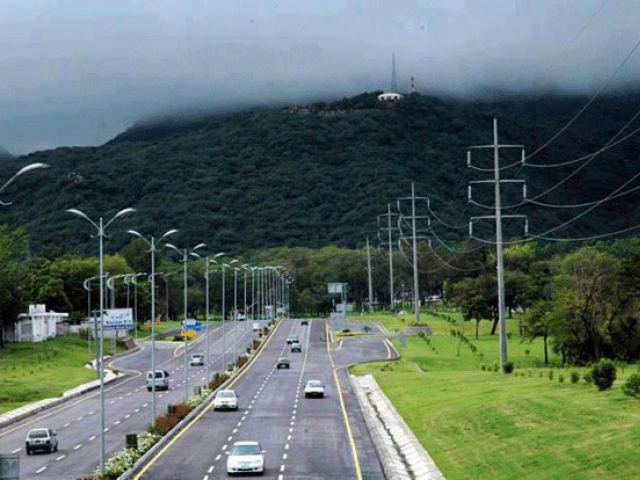
ISLAMABAD: Pakistan recently celebrated its 70th independence anniversary, around which numerous events were organised. One of these was the Development Summit & Expo held by the Ministry of Planning, Development and Reform.
In this, one of the sessions was dedicated to the future of Pakistan as a potential country among top 25 economies of the world by 2025. This goal is incredibly ambitious.
The main prerequisite for achieving major growth is export competitiveness. Weaknesses include low productivity, poor human resources training, poor infrastructure, low value-added goods, low sophistication, lack of technology and almost no value chain integration. Pakistan is not proficient in any of these fields.
Pakistan's GDP growth rate is even higher than that of China: Harvard study
The Vision 2025, approved on May 29, 2014, identifies exports as a major source of GDP growth. Pakistan’s exports have been falling for the past few years and foreign direct investment (FDI) inflows have also been very low.
In 2010, the FDI was $3.184 billion, which fell to $2.099 billion in 2012 and then rose to $2.761 billion in 2016.
This could be attributed to poor conditions such as law and order situation, poor economic incentives for businesses, lack of export competitiveness, low exports which are high in weight and low in value, lack of sophistication, poor technology, low productivity and lack of diversity of both exports products and export destinations.
The lack of success can be contributed to inconsistent policies due to multiple government eras, myopia, poor policy design and/or implementation, and overall lack of policy coverage for the required sectors.
The quality improvement, in particular, has been a dismal aspect of this as attempts to increase quality would be met with walls of low productivity and lack of technology. In many cases, quality could only be improved with better technology, which has proved difficult to adopt at the sector level.
The failure to move up the quality ladder meant that eventually there would be a wide array of low-specialisation areas of exports, contributing little to the economy.
While there have been some efforts to diversify exports, this effort has not yielded significant results and the country’s traditional exports have gone down. Quality enhancement is the only way for moving up the value chain, first regionally and then at the international level.
The economy has not been able to move out of the traditional export sector like low value-added goods of textile and less sophisticated goods (eg some medical instruments).
This is, in most part, the outcome of poor existing export infrastructure, which does not encourage innovation, technology transfer and investment, and has placed a limit on the potential of all sectors due to very low productivity.
At the macroeconomic level, the government has failed to provide necessary investment for the economic structure eg failing to have a robust innovation structure, policy that encourages enhanced coverage of sectors rather than concentration in a few sectors and poor policy that fails to increase productivity.
Comparison with competitors
Pakistan’s exports are restricted to low-processed low-value textile goods. Other economies such as that of Argentina, Thailand, Malaysia and South Africa are sophisticated as far as technological penetration is concerned.
Many of these economies export hardware, cars and high-end consumer products, which require technology that Pakistan does not currently have. As far as logistics are concerned, Pakistan performs extremely poor.
The Logistics Performance Index is, in many ways, the clinch factor. Without infrastructure to support high technology, high and deep innovation, and high-value goods for diverse destinations, there can be no way to deny that exports will suffer. The system, after all, is afflicted by its own poorly built infrastructure.
This structural nature of the problem has been the result of decades of inconsistent, poorly designed, vested-interest-focused and badly implemented policy that failed to focus on Pakistan’s core strengths in textile and failed to nurture technological sophistication and innovation.
China factor
China is the single most important factor that comes into play for Pakistan. Not only Beijing is a competitor, but the China-Pakistan Economic Corridor is a key project for Pakistan’s potential achievements.
‘Pakistan’s GDP growth expected to hit 9-year high in current fiscal year’
Pakistan has been unable to benefit from the always expanding Chinese import market. China is also the largest export economy in the world and the 19th most complex economy, according to the Economic Complexity Index (ECI).
Pakistan is seeking a deeper economic integration with China through CPEC. China is far ahead in terms of economic size, sophistication and value chain integration into the world. In other words, China has succeeded in becoming a highly ‘Complex Economy’.
According to the OEC, China is at 19th position in terms of economic complexity. Pakistan, on the other hand, ranks 87th out of 184 countries.
The value chain integration means better quality suppliers, more efficiency via technology transfer, better human and machine resources, better value addition potential and achievement, massively enhanced innovation, logistics support, and better growth and infrastructure potential.
The role of CPEC is crucial in pushing Pakistan up on the ladder of complex economies. CPEC can provide Pakistan much-needed FDI for the starving economy, help massively overhaul the external economy including the infrastructure of tradable sector and capital account, and improve its logistics and economic structural integrity and quality.
Furthermore, the use of Special Economic Zones in various forms is a key asset to achieve strategic objectives of the Vision 2025.
Concluding, the fate of Pakistan lies in its export sector. Even with the advent of CPEC, if there is no effort to change the decades-long policy style, then there will be a repeat of the history itself.
The emphasis, therefore, must shift to achieving the required economic, industrial and services sector growth in real terms, and applying that framework to the economy as a whole. The economic structure must be modified in order to become much more export-oriented.
The gears of the economic machinery must be changed towards export growth, sophistication, revival and value addition.
The writer works at the Sustainable Development Policy Institute in the Policy Solutions Lab as a researcher. He holds Masters in Economics from Belgium
Published in The Express Tribune, August 28th, 2017.
Like Business on Facebook, follow @TribuneBiz on Twitter to stay informed and join in the conversation.






































1713521455-0/Untitled-design-(9)1713521455-0-270x192.webp)





















COMMENTS
Comments are moderated and generally will be posted if they are on-topic and not abusive.
For more information, please see our Comments FAQ